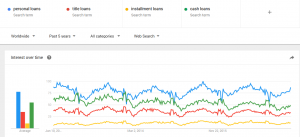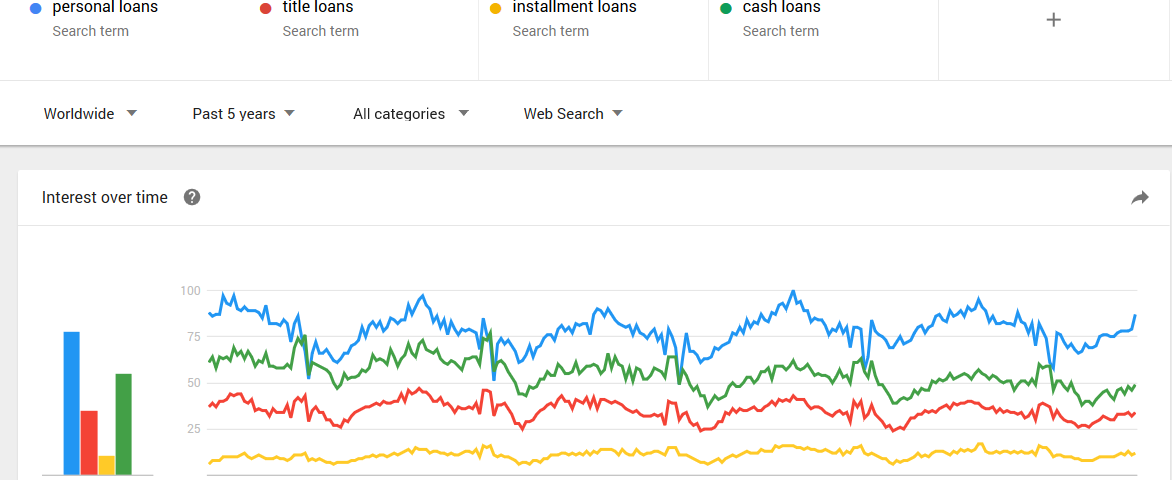Auto Title Loan Statistics
 Thanks to their low requirements, car title loans can sometimes be a potentially viable option for those who don’t have a high enough credit score to get a loan the more conventional way. When you get a car title loan, you volunteer the car itself as a form of collateral to get funding; that much is fairly obvious to most people, but there are a number of interesting statistics about auto title loans that many people might find surprising. The following are some of the most important auto title loan statistics to be aware of in 2017.
Thanks to their low requirements, car title loans can sometimes be a potentially viable option for those who don’t have a high enough credit score to get a loan the more conventional way. When you get a car title loan, you volunteer the car itself as a form of collateral to get funding; that much is fairly obvious to most people, but there are a number of interesting statistics about auto title loans that many people might find surprising. The following are some of the most important auto title loan statistics to be aware of in 2017.
Title loan demand and annual percentage rate
In 2016, just about 2 million people opted for a car title loan and 80 percent of them rolled over on it. While many of those who sought out a car title loan might’ve done so due to its presentation as a short-term payment plan, rolling over on it quickly piles up the interest and turns into a long-term loan.
Economically difficult times can make it exceedingly easy for many people in financially vulnerable positions to be drawn to seemingly favorable title loans that rapidly turn into disastrous money pits after the first of missed payment.
On average, the average annual percentage rate for most car title loans is around 300 percent; naturally, this is a far cry from the easy-street deal that many people envision when they seek them title loans out to circumvent conventional auto loan requirements.
Despite the risk, auto title loans certainly won’t be going away anytime soon. Even in the post-subprime loan market, the number of car title loans in California alone rocketed from about 38,000 to over 91,000 between 2011 and 2013.
Fees and income consumption
On an annual basis, the average amount that an auto title loan customer pays in fees for a loan averaging $1000 is about $1200. When making their title loan payments, the average auto title loan customer is usually consuming half of the average monthly income for the typical borrower. Even though so many auto title loan customers sacrifice 50 percent of their monthly income just to make their title loan payments, 11 percent of them end up having their cars repossessed on an annual basis.
Title loans out of necessitty
As risky as auto title loans may be, it is not hard to see why they are in such high demand. The statistics show that 11 percent of the entire United States workforce is employed by automobiles. Aside from transportation to and from work, having a personal car is one of the main avenues that many individuals have into their communities so that they can enjoy their way of life.
The 2014 United States census showed that 86 percent of the United States workforce aged 16 years or older either carpooled or drove to work for an average of 16 miles a daily basis. In many cases, simply having access to a car for regular transportation can be one of the dominant factors determining an individual’s earning potential.
Summary
The booming sub-prime loan market of the 1990s gave many people access to auto financing that they would have otherwise never dreamed of receiving, but unfortunately, that boom came to a screeching halt by 2009. Auto title loans can be very useful for those who are diligent and fortunate enough to keep current on their payments under more hospitable title loan terms, but in most cases, auto title loan customers take on a massive risk that isn’t entirely in their favor.
Ultimately, the funding offered by last-chance lenders who specialize in offering capital to those who are in the least optimal position to make regular payments can be equally life-saving and life-disrupting depending on any number of circumstances.
